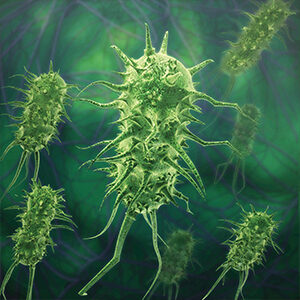What are noroviruses?
Noroviruses are a group of viruses that cause gastrointestinal (stomach) illness in people. These viruses are very contagious and can spread very easily from person to person. Anyone can get infected with noroviruses and can have the illness caused by noroviruses multiple times in their lifetime.
What are the symptoms of illness caused by noroviruses?
The symptoms of norovirus illness usually include nausea, vomiting, diarrhea, and stomach cramping. Sometimes people have low-grade fever, chills, headaches, muscle aches, and feel very tired. The illness often begins suddenly, but is usually brief, with symptoms lasting one to two days.
How serious is norovirus illness?
Norovirus infection does not usually cause serious illness, although people may feel very ill and vomit many times a day. Most people will feel better within one to two days and have no long-term health effects.
However, sometimes people are unable to drink enough fluids to replace what is lost from vomiting and diarrhea. They can become dehydrated and may need special medical attention. Dehydration is more commonly seen among the very young, the elderly, and persons with weakened immune systems.
How do people become infected with noroviruses?
Noroviruses are found in the stool or vomit of infected people. People can become infected by:
- Having direct contact with an ill person.
- Eating foods or drinking liquids that are contaminated with noroviruses.
- Touching surfaces or objects contaminated with noroviruses and then touching their own mouth.
People who work in childcare centers, long-term care or healthcare facilities should pay special attention to clients and staff who have gastrointestinal symptoms. Cleaning and
hand washing are highly recommended because norovirus illness is very contagious
When do symptoms appear?
Symptoms of norovirus illness usually begin within 24 to 48 hours after ingesting the viruses, but they can appear as early as 12 hours after exposure.
How long are people contagious?
People who have norovirus illness are contagious from the moment they begin feeling ill to at least three days after recovery. Some people may be contagious for as long as two weeks after recovery.
It is very important for people to practice good hand washing while ill and after they have recovered from any diarrheal illness.
What treatment is available for people with norovirus infection?
Currently, there is no medication that cures norovirus illness and there is no vaccine to prevent it. Noroviruses cannot be treated with antibiotics because antibiotics kill bacteria, not viruses. The best treatment for those infected with noroviruses is rest and plenty of fluids.
Can norovirus infections be prevented?
Yes. Prevention includes:
- Frequently washing hands, especially after using the toilet and changing diapers, and before eating or preparing foods.
- Carefully washing fruits and vegetables, and cooking oysters before eating them.
- Thoroughly cleaning and disinfecting contaminated surfaces immediately after an episode of illness. Clean with soap and water and then disinfect with a bleach solution (2 Tbsp. of bleach per quart of water.) This solution should be made fresh daily.
- Immediately removing and washing clothing or linens that may be contaminated with viruses after an episode of illness.
Persons who are infected with noroviruses should not prepare or serve food while they have symptoms and for three days after they recover from their illness. Food that may have been contaminated by an ill person should be disposed of. Food service, childcare and healthcare workers who have norovirus illness should not go to work for 72 hours after recovery.

Communicable Disease Investigation & Prevention (CDIP)
Epidemiologists monitor, track, and respond to infectious disease in the community to prevent spread of illness.

